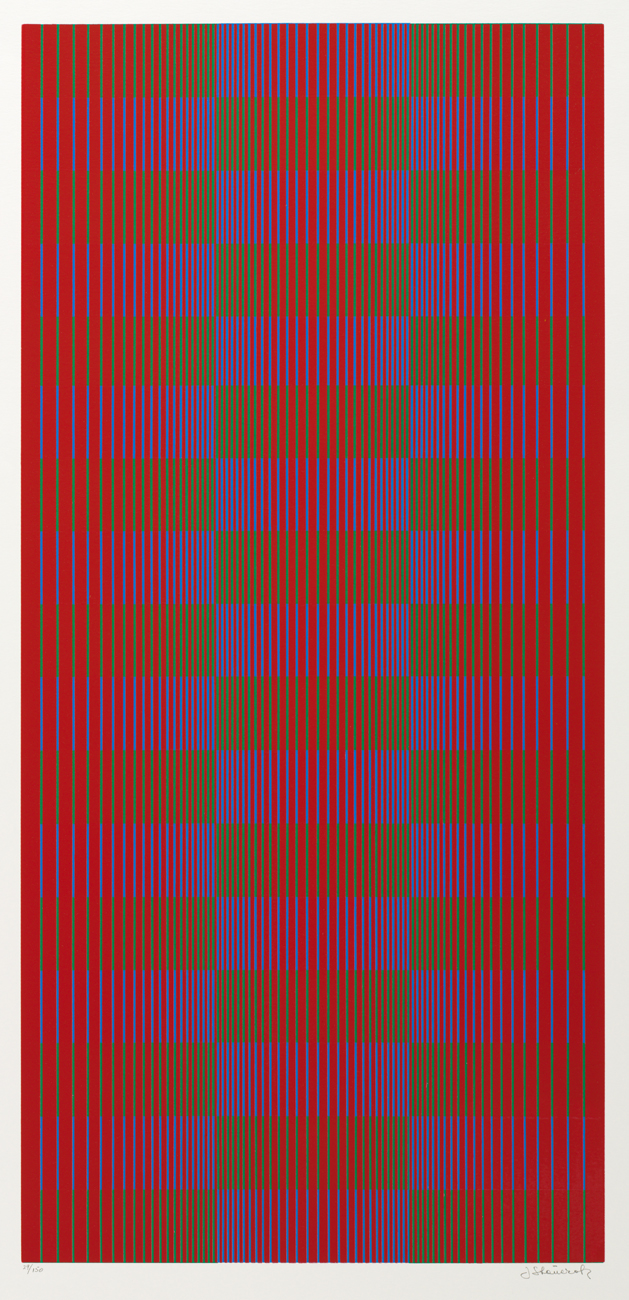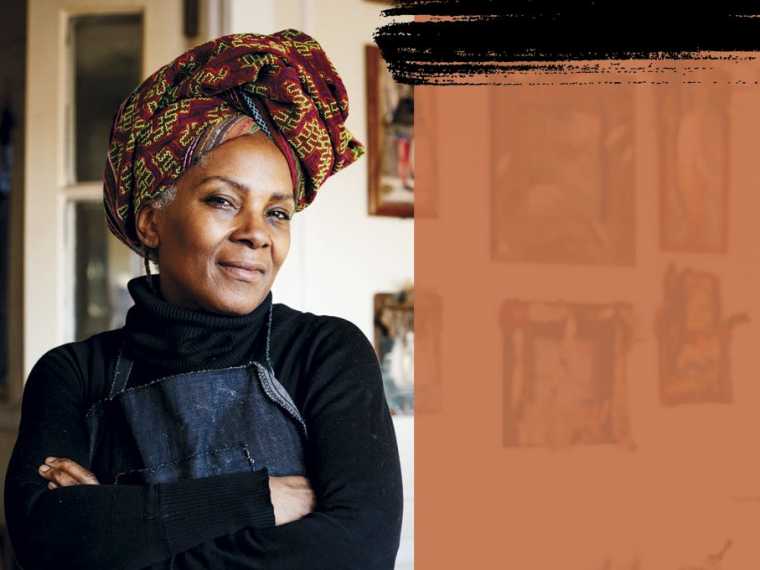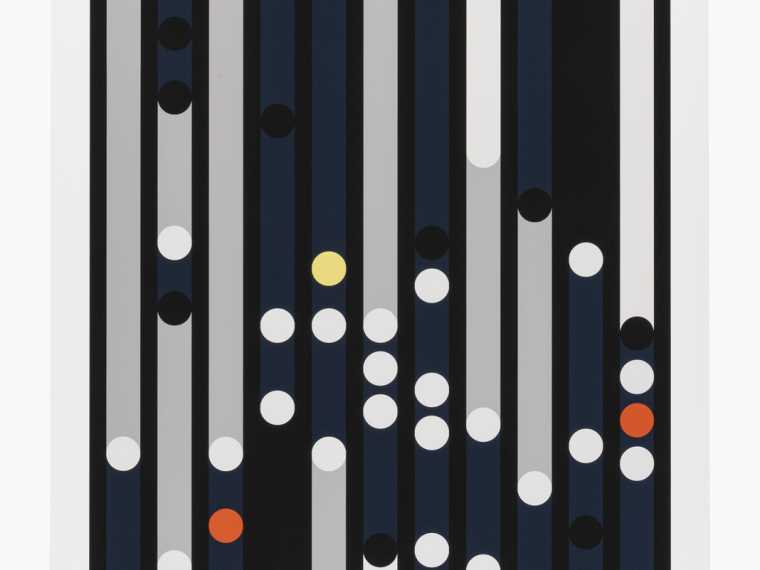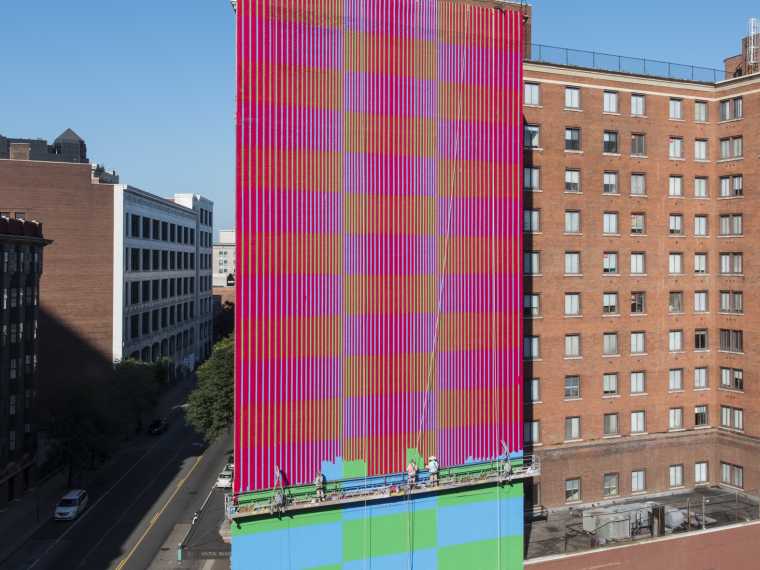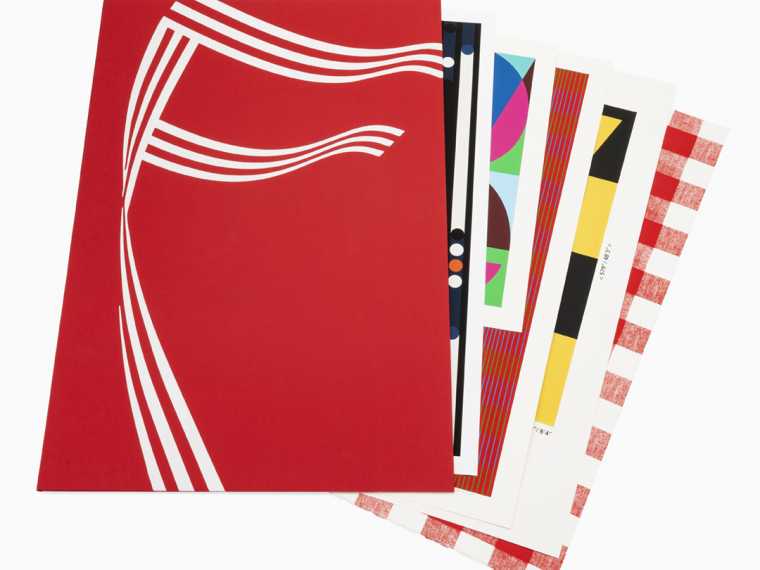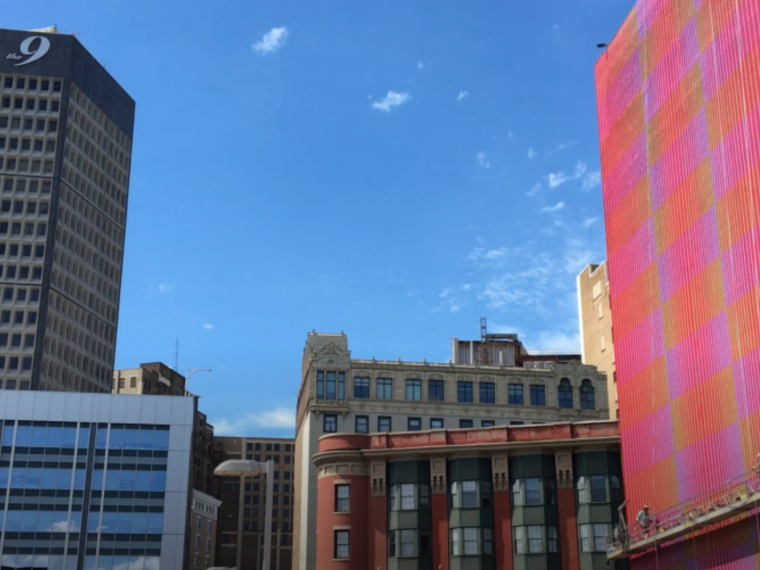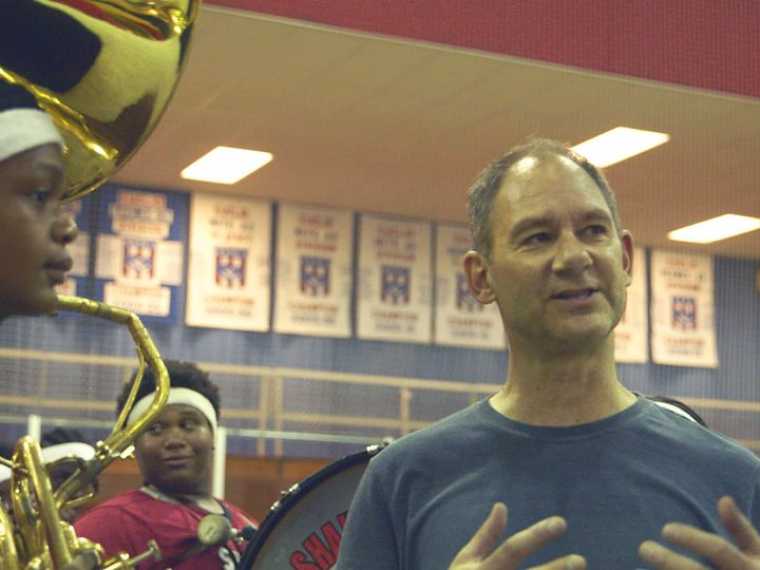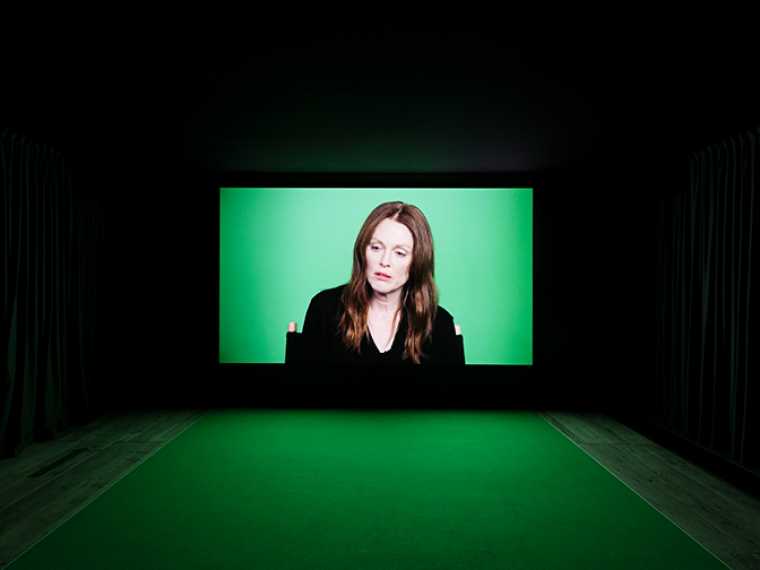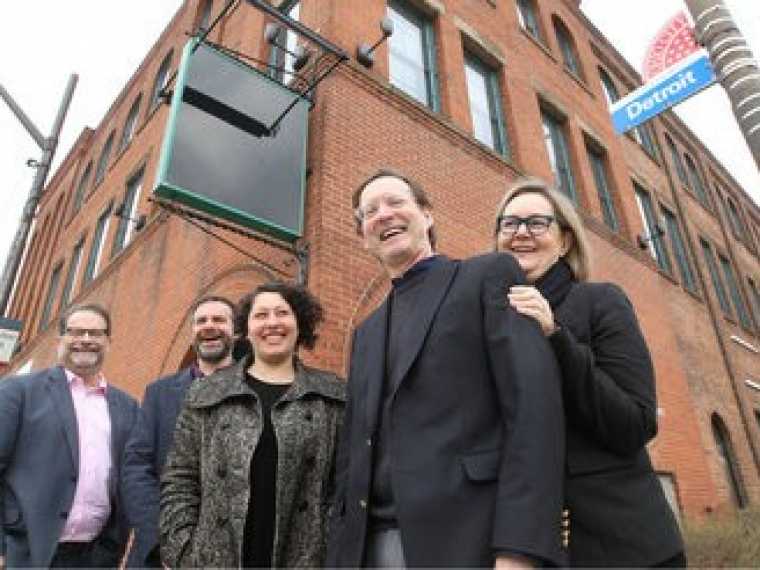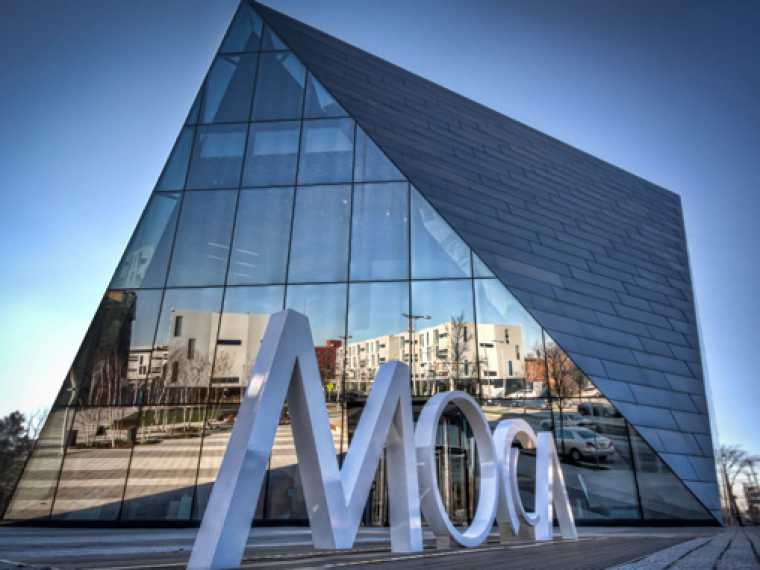1104 Prospect Ave E.
Cleveland, OH 44115
This project reexamines the important public art effort, City Canvas, that covered walls in downtown Cleveland in 1973-74 with colorful murals by established Cleveland artists, including the late abstract painter Julian Stanczak. As an homage to Stanczak, FRONT’s new project will reinstate his mural on its original site at the Winton Manor on Prospect and 9th Street. While the original mural program of the 1970s was undertaken to enliven a moribund downtown, this commissioned series of outdoor works intends to explore relationships between abstraction and consumer culture, between painting and the cityscape installed between Public Square and Playhouse Square. Passersby will be able to witness a visual call and response between a beloved Cleveland artist, and representatives of new directions in contemporary abstract painting. Additional murals will be projected using augmented reality technology, allowing visitors to envision these projects that will materialize in Cleveland’s downtown cityscape in future editions of FRONT.
Experience all of the murals now on the free VR FRONT Canvas City app. Developed by the CMA’s Digital Innovation and Technology Services team. Click here to download the app.
Artist Biography
Julian Stanczak was an American painter and printmaker. He was born on November 5, 1928 in Borownica, Poland. When World War II broke out, he was sent to a concentration camp in Perm, Siberia. Stanczak had been right-handed before he lost the use of his right arm for good at the camp. In 1942, after successfully escaping from the camp, Stanczak joined the Polish army-in-exile in Persia, but soon deserted it. After that, the artist spent his time in a Polish refugee camp in Uganda, Africa. This was where Stanczak learned to write and paint with his left hand, and where he took his first private art lessons. He then went to Borough Polytechnic Institute in London before immigrating to the United States in 1950. Four years after his immigration, Stanczak received his BFA from the Cleveland Institute of Art. In 1956, Stanczak became a United States citizen. It was also in 1956 that he received his MFA from Yale University under the training of Josef Albers (German-born American, 1888–1976) and Conrad Marca Relli (American, 1913–2000).
Stanczak’s first major solo exhibition took place at the Martha Jackson Gallery in New York. Julian Stanczak: Optical Paintings was named after the Op Art movement. His work was also exhibited in the Museum of Modern Art’s 1965 exhibition The Responsive Eye. In the early 1960s, Stanczak took advantage of the use of wavy lines and contrasting colors to make the surface plane of his works more vibrant. The work Provocative Current (1965) is a notable example of this unique style. This style of painting also paved the way for more complex artworks constructed with the rigidity of different geometrical shapes; however, it maintained the softness with many levels of color transparency. Netted Green (1972) is a famous work representing this style. Stanczak uses the same form again and again to produce compositions that reflect his visual experiences. His works are mainly based on the structures of color. In the 1980s and 1990s, Stanczak kept the geometric formation in mind, and produced bright-colored or muted-colored paintings often as pieces in a series such as Soft Continuum (1981).
In 1970, Stanczak was recognized as an “Outstanding American Educator” by the Educators of America. He lived and worked in Seven Hills, OH, with his wife, the sculptor Barbara M. Meerpohl before his death on March 29, 2017.
